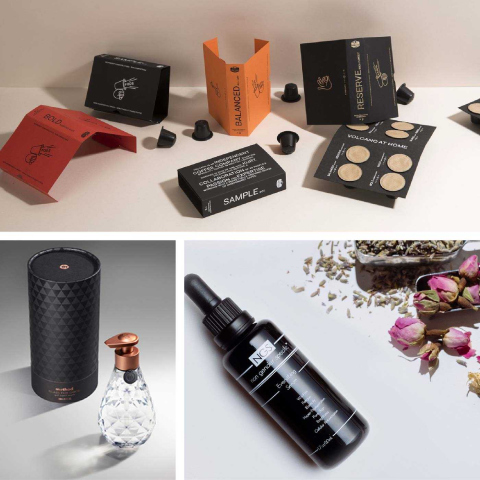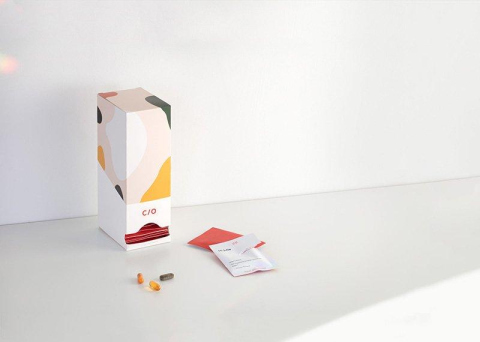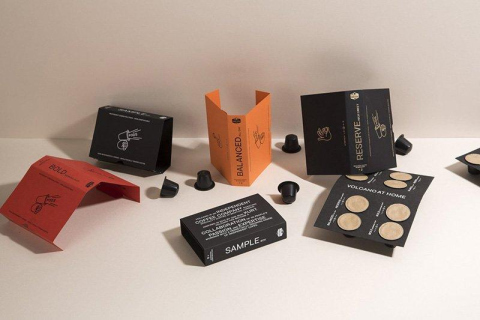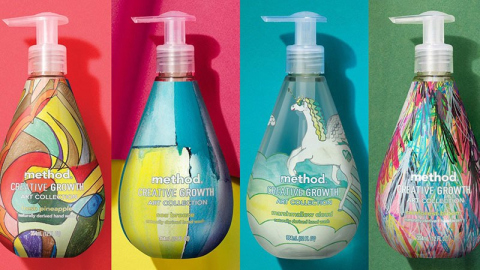Packaging Designers take on Millennials

Given their status as early-adopters of new products and lifestyles, it’s no surprise that a growing number of brands are seeking to target Millennial consumers. Not only do they have significant spending power, but their choices influence other age groups too. Something which is only set to continue, given that Millennials are predicted to take over from Boomers as the largest generational demographic in the United States this year.
But what really makes this generation tick? We’ve identified five key Millennial values - convenience, ethics, experience, individuality and inclusivity - and explored how packaging designers can translate these concepts into designs that will have true shelf-appeal.
CONVENIENCE
Perhaps the buzzword of the past few decades, a desire for convenience has radically altered how consumers interact with brands and products. Millennials have grown up in the era of online shopping and “an app for everything” and are therefore likely to crave ease and convenience when it comes to packaging design too.
In particular, a rise of busy, on-the-go lifestyles is leading to a rethink in packaging design for a whole range of products. Already commonplace among food brands, such as on-the-go snacks, the beauty and wellbeing industry is increasingly embracing this approach too.


Take for example, direct-to-consumer brand Care/of, which aims to demystify the complexities of buying and taking supplements. The business offers customisable vitamin and supplement packs delivered to the customer’s door each month. The neat boxes, adorned with colourful abstract patterns, contain personalised sachets of the customer’s daily dose of tablets. Simple icons and explanations on the brand’s website make it easier to choose the right supplements, while the sachet-style packaging makes them a portable alternative to clunky old-fashioned pill boxes.
ETHICS
Sustainability is becoming an increasingly important factor for most packaging designers, and it’s something that is particularly likely to drive Millennials away or towards a brand. In fact, the majority of this demographic are even willing to pay extra for more sustainable products and services.
There are a wide variety of packaging designers who are getting it right when it comes to sustainability – from recycling materials to reducing shipping emissions. Yet when it comes to targeting Millennials specifically, it’s worth identifying that sweet spot between convenience and sustainability is particularly likely to appeal to this group.


It’s an approach taken by Volcano Coffee, which sells Nespresso-compatible capsules that are made from a 100% bio-based cornstarch material. Unlike many conventional coffee pods, which require special recycling treatment, these compostable alternatives can simply be placed into local authority food-waste collections. The cardboard exterior packaging is also designed with sustainability in mind, made from a single sheet of recycled fibreboard to make it as compact as possible.
EXPERIENCE
Millennials are an experience-led generation, placing more value in what they do than what they buy. In the past few years this has transpired within the packaging sector through the rise of the premium essential, with everyday products elevated into a luxurious experience.

The trend has played out particularly within chocolate packaging design, such as our own design for family-owned confectioner’s Goupie, which reflects the artisanal values of the brand, offering customers a indulgent experience at an affordable price-point. Yet it’s not just food that can be elevated through premium styling, with packaging designers increasingly applying this outlook to household products too.


Eco-cleaning brand Method has launched several limited edition packaging designs that feature bold motifs and artistic patterns, making them an object that brings personality to even the mundane task of washing up. A collaboration with SFMOMA takes this a step further still, with a chic faceted glass bottle, complete with copper-toned pump, offering a luxury alternative to regular hand soap containers.
INDIVIDUALITY
While most generations strive to be different from those before them, Millennials are often seen to be striving to be different from each other too, with a desire for individuality and being oneself a key identifier for this group. Packaging designers are increasingly tapping into this through personalised designs that allow customers to choose products that align with their style and identity.

Captain Morgan recently launched a range of bottles that aim to reflect the varied audience of its rum. The new labels replace the name Morgan with different characteristics – from Captain Clueless to Captain Comedy – a playful approach that is particularly likely to appeal to customers buying gifts for friends. Similarly, Nestle offered Quality Street fans the chance to buy a personalised tin during the 2018 Christmas period, replacing Quality with their own name as recognition of this product’s status as a traditional seasonal favourite for many.
Customisable packaging can do more than strengthen the consumer-brand relationship, with its uniqueness making it highly ‘instagrammable’ for this social media-fuelled generation. In fact, 74% of 18-25-year-old consumers are already actively sharing photos of retail packaging across Facebook, Instagram, and other social networks.
INCLUSIVITY
Our final value is inclusivity. Millennials are one of the most open-minded and diverse generations, meaning they are increasingly seeking products and services they feel are representative of their views, and feel are accessible to both themselves and their wider communities.
Gender-neutral cosmetics packaging is a key trend here, with brands shaking off stereotypes of existing gender norms and crafting products and branding that appeal to a wider spectrum of consumers. Some brands have even made this central to their core philosophy, such as Non-Gender Specific, which pitches itself as ‘the brand for all humans’.

The next step will be for brands to embrace inclusivity towards more marginalised groups, who often don’t see themselves represented in either the mainstream media or the products they buy.
For example, Herbal Essences recently launched a new bottle design in North America that features raised marks to help visually impaired users distinguish between shampoo and conditioner. The tactile additions make no difference to its existing customer base, but have the potential to make visually impaired people feel recognised and catered for, while also raising awareness of their everyday needs.
WHAT DOES THIS MEAN FOR YOUR BRAND?
As a packaging designer it’s essential to understand your audience and their motivations for buying a particular product. Defining the purchaser and their core values should frame the start of any packaging design project.
Whoever your customer base is, we can help you identify what’s important to them and design packaging that aligns with their values, while also highlighting what makes your product worth buying.


